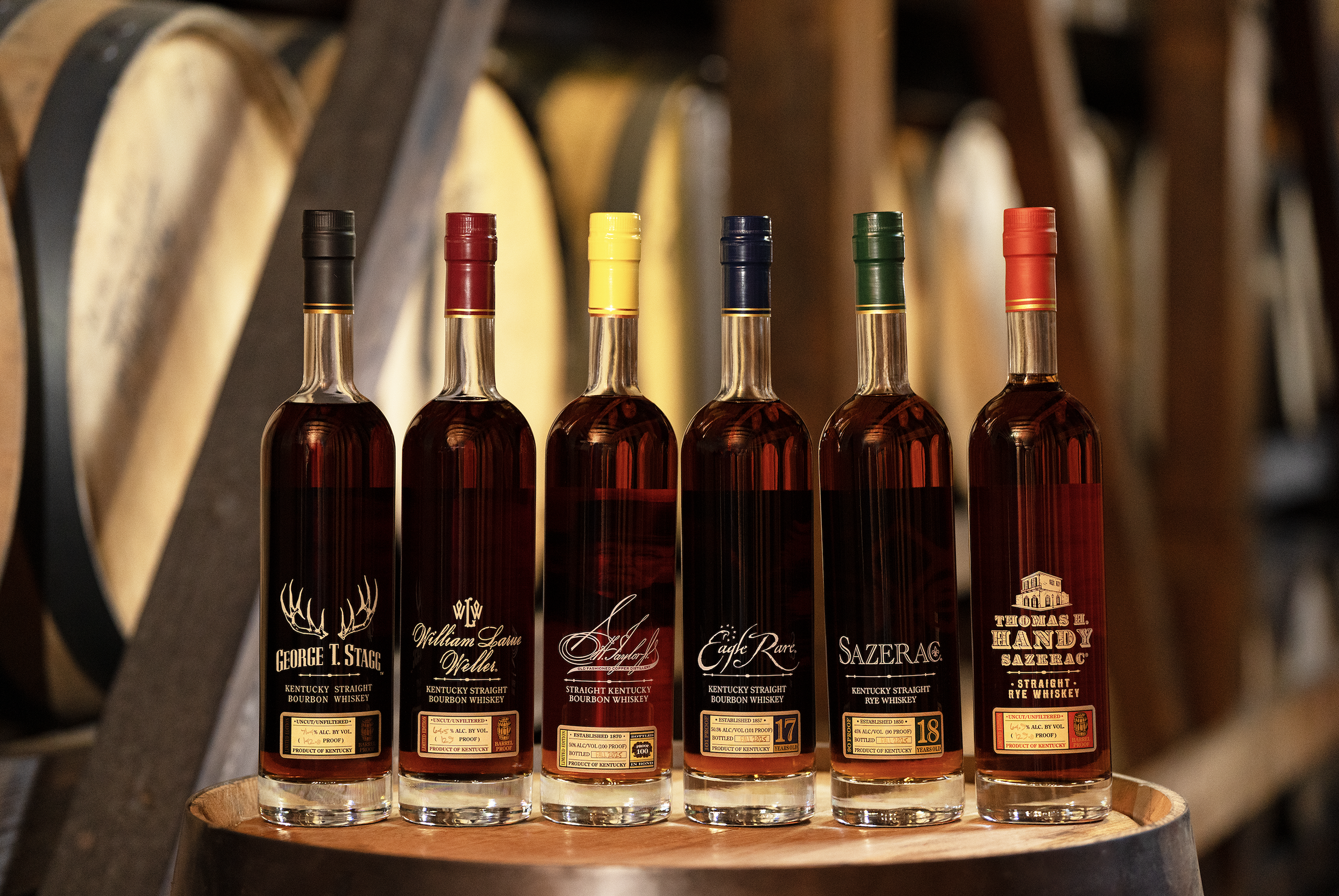Geek Bar: The science of tasting whisky (and how you can be an expert too)
When you taste whisky, there’s a a lot going on. 400 olfactory sensors. Up to 5,000 taste buds. Nose, gum, cheeks, the shape of the glass, what you had for lunch and how stressed you are, they all have a part to play in what you experience. Resident mad scientist Ian Wisniewski takes a heady trip into the realm of the senses and beyond…
Of course I said yes. The invitation was from Glenmorangie, the host Dr Bill Lumsden, a malt whisky maestro who speaks with great knowledge, passion and humour, while also stylishly attired (Missoni is a favourite, I wore a striped blazer as an act of homage). Bill introduced The Glenmorangie 21-year-old Sauternes Wood Finish 1981, then his latest innovation, which spent its final two years maturing in casks that previously accommodated Sauternes.
I could have just inhaled deeply, enjoyed the aroma, taken a sip and savoured the flavours. But the mind is programmed to look for clues and anticipate the result. As I consider Sauternes the ultimate dessert wine, and love Glenmorangie’s citrus vitality, my mind decided I was about to have a special experience.
This process of anticipation doesn’t just happen to geeks like me, it applies to us all, the only difference being whether it is experienced consciously or subconsciously. Either way, the effect is the same: we have expectations. The more enticing the credentials, such as a Sauternes cask, the greater my expectations. The more I like the design of a bottle and the label, the more I expect from the contents. This creates a serious risk of judging a malt against expectations, and if the malt doesn’t fulfil those expectations I may feel misled, deceived, even betrayed (it can get very emotional). That is so wrong! I’m the one at fault, not the malt. That’s why I do everything I can to prevent my brain from telling me how it will be. The only criteria should be what’s in the glass, not what’s on my mind.
Having a ‘neutral’ starting point also means relinquishing any emotions, which can have a subliminal effect. Stress, for example, can promote a desire for the malt to provide emotional uplift, which again places expectations on a malt. To help establish a sense of neutrality I always follow the same routine when tasting. Arranging tasting glasses of the same size and shape, and filling to the same level, aligning a pen with a writing pad. The first sample is always a prequel to the flight, a familiar malt that serves as the ‘control sample.’ This enables my palate to acclimatise to alcohol, and check that my senses are in working order.
Taking the vapours (and why your nose knows best)
Nosing is rather like shaking hands with someone before the conversation begins, being the first physical contact with a malt, albeit the vapours. I’d hoped possessing a substantial nose would be an advantage, enabling me to inhale larger volumes and analyse more accurately. But the dimensions are irrelevant, it’s the contents that matter.
Whether nostrils are able to assess vapours is uncertain, but nostrils provide an ideal conduit for vapours to reach the summit of each nasal cavity. This is where the olfactory epithelium is located, containing olfactory receptors that identify aromas.
Olfactory receptors divide up into about 400 different groups, each with varying capabilities. An individual aroma can stimulate numerous groups of receptors, though most respond to more than one aroma. Different groups of receptors also work together in various permutations, which extends the range of aromas they respond to.
Ian Wisniewski still remembers the aromas of baked apples evolving into tarte tatin with vanilla creme Anglaise from a 2002 tasting of The Glenmorangie Sauternes Wood Finish.
Picture credit: Alastair Duncan
The extent and intensity of aromas experienced depends on our individual capability, as we each have varying levels of sensitivity and insensitivity to every aroma and flavour. Citrus, which is present in so many whiskies, is one example though the broadest range of sensitivity/insensitivity is to phenolic compounds (which provide smokey, peaty notes), as well as coconut and cork taint. Detecting cork taint is typically considered proof of a superior nose. But the reality is that some people are so sensitive to cork taint that it is overwhelming, while others can inhale and be oblivious of its presence.
The aromas can arrive leisurely or with greater urgency. Toast and smoke accelerate from Laphroaig Quarter Cask, for example, and can’t wait to reach the nose.
‘The aroma of Bruichladdich Classic Laddie begins with digestive biscuits and croissant, then smoke and embers join in, followed by creme brûlée and muesli’
Aroma is often treated as (merely) a preview of the flavours to follow, and again this creates expectations. The palate may replicate the aroma, but the line up and intensity can also vary, subtly or significantly, creating surprise or disappointment. The aroma of Bruichladdich Classic Laddie begins with digestive biscuits and croissant, then smoke and embers join in, followed by creme brûlée and muesli. The palate shows some similarities, but also some differences, opening with sweetness before expanding into brioche and pain au chocolat, with hints of aniseed and clove, underlined by dry oak. This may create some surprise, but definitely not disappointment. And as expectations add an extraneous layer to assessing a malt, I treat the aroma as a separate event from the palate, and only think about the connection between them subsequently.
Tongues, gums and cheeks - the marvels of mouthfeel
What a moment it is when a malt and palate are united. The first characteristic to reveal itself is the mouthfeel, gauged primarily by the tongue using its nervous system, with some additional input from the gums and cheeks. Mouthfeel varies enormously among malts, from soft and delicate, to silky, velvety, juicy, luscious and fuller-bodied. This makes mouthfeel an integral part of a malt’s individuality, with Glen Grant 10-year-old for example juicy and luscious. Even malts at a higher alcoholic strength can deliver a soft, delicate texture (as flavour compounds determine texture, not alcoholic strength). Port Ellen 28-year-old distilled 1979 is 53.8% abv, but delivers an ultra-delicate mouthfeel, which continues with a creamy, creme caramel character.
The tongue is also the most active and discerning element of the palate when detecting flavours, being equipped with papillae, which have a porous surface. Liquid and flavour compounds pass through this porous surface reaching taste receptors within. Taste receptors are able to identify primary characteristics, including sweetness, sourness, salt, umami and bitterness.
An average tongue has between 2,000-5,000 taste buds, but then who wants to be average. However, even some confirmed ‘super-tasters’ have entirely average totals. What really matters is the brain’s ability to compute information provided by taste buds, an ability which is, in turn, enhanced by experience.
‘I visualise flavour as an orb, around which other flavours circulate, as though orbiting a planet. This is how I experienced The Dalmore Vintage 2007, which has a core of dryness and concentrated fruit, from which vanilla, caramel and subtle spices radiate’
Taste receptors also have additional back up when identifying familiar flavours such as vanilla, fruit and phenolic compounds. These compounds are volatile, and when warmed by the palate to body temperature (37 degrees centigrade), they evaporate from the liquid and make their way through the retro-nasal passage (located at the back of the throat, this links the palate and olfactory). This passage doesn’t identify vapours, it’s simply a conduit for vapours to reach olfactory receptors, which are the main assessors. This is the same destination that aromas reach when departing from a glass, it’s just a different route.
Sweetness is often one of the first notes to appear in a malt, followed by vanilla and fruit, with dryness, oak and maltyness appearing mid-way. This sequence doesn’t actually depend on how the malt whisky wishes to reveal itself. It is the brain that decides on the order in which we detect characteristics. This begins with a ‘safety check’ by looking for sourness, and whether something is safe to consume. Then comes the ‘reward’ for passing this test by focusing on sweetness, followed by salt and umami, with bitterness last of all.
Aroma therapy & the power of your palate
Messages from the palate and olfactory sense are posted to the brain using the central nervous system as a communications highway. The tongue is served by two separate cranial nerves, one at the front, the other at the back. Olfactory receptors utilise the first cranial nerve (olfactory nerve) to transmit messages to the olfactory bulb. After some initial assessment the olfactory bulb refines and intensifies these messages, forwarding them to other parts of the brain, including the piriform cortex where aromas are identified further.
Messages from the olfactory and palate rendezvous in different parts of the brain. This includes the orbitofrontal cortex which helps to determine individual flavours, and also the extent to which each flavour appeals (or not). Emotional responses to flavours are determined by the piriform cortex and amygdala.
When all of this information reaches the hippocampus, it is placed in the equivalent of an ‘in tray.’ The hippocampus plays a vital role in learning, as well as encoding and storing memories. Experiences and knowledge acquired during the day are transferred during the night into an archive that provides long term storage. Exactly how the memory operates is only partially understood, though it’s clear that the more we are able to access our memory bank, the greater our ability to assess aromas and flavours.
‘Messages from the olfactory and palate rendezvous in different parts of the brain. This includes the orbitofrontal cortex which helps to determine individual flavours’
While I’m tasting I visualise flavours as layers and shapes, which is never consciously done, it just happens naturally and this is my schema (a term which encompasses the overall tasting process). For example, richer notes such as maltiness, digestive biscuits and dryness form a base layer, while the top layer includes sweetness and lighter notes such as citrus. Sandwiched in-between are various favourites, vanilla, chocolate, espresso, tiramisu and honey. Subtle notes appear at the margins of each layer.
Some malts have a different structure with a particular flavour at the core, in which case I visualise this flavour as an orb, around which other flavours circulate, as though orbiting a planet. This is how I experienced The Dalmore Vintage 2007, which has a core of dryness and concentrated fruit, from which vanilla, caramel and subtle spices radiate, together with an aura of orange marmalade.
Other tasting methods are available: Whyte & Mackay’s Richard Paterson works his magic
The finish is a vital part of the tasting experience, particularly as this lasts longer than the amount of time a malt is on the palate. This usually begins with dryness, followed by some of the flavours experienced on the palate, and sometimes flavours that weren’t. Glen Grant 15-year-old, for example, shows toffee apples, oak and spice on the palate, while the finish opens with light dryness, followed by sticky toffee pudding and caramel. Whatever the finish delivers it should of course be enjoyable, and encourage the next sip.
And there it is, the malt has revealed its flavour. But that was the flavour then. The second sip will be different. As will the third. This is because conditions on the palate are continually evolving, having acclimatised to alcohol, and flavours such as sweetness accruing, but the brain is also able to process more data with each sip.
‘I was no longer aware of my surroundings, or myself. I was in a realm where only flavours and sensations reigned. This is the magnificence of malt whisky’
The first sip provides the brain with so much information that the focus is (deliberately) restricted to primary characteristics. A second, and subsequent sips, allow the brain to focus more on secondary and subtler notes, while also noting differences between the first and following sips, which develops a more detailed picture. And the next time I taste this malt it may seem the same, or similar, or different. The malt remains the same, the palate doesn’t. What is eaten for example, particularly something sweet or spicy, can have an enormous influence on the perception of a malt.
Enjoying a malt whisky has another profound effect, which was exemplified by tasting The Glenmorangie Sauternes Wood Finish. Even though this took place in 2002 (and being a limited-edition I haven’t had another opportunity) the memory remains vivid. Luscious honey, raisins and lemon curd were delicious, but merely an overture to the main event: baked apples which evolved into tarte tatin with vanilla creme Anglaise (my absolute favourite pudding). I was no longer aware of my surroundings, or myself. I was in a realm where only flavours and sensations reigned. This is the magnificence of malt whisky, it transcends flavours and creates amazing experiences.
Ian Wisniewski is a freelance spirits writer, focusing on Scotch whisky. He has written four books on whisky, including The Whisky Dictionary (Mitchell Beazley, 2021).
Picture credit: Roberto Ricciuti









